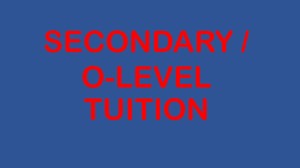I wanted to proceed to Current Electricity, but the students wanted more discussion on how to answer application questions on electrostatics.
So I supplied them with quite a number of such application questions, often with confusing diagrams. The key to answering such questions is to first draw the distribution of charges on the items in the diagram, and identify which objects are conductors and which are non-conductors. For the conductors, check whether they are insulated from the surroundings.
Key points to note:
(1) Only non-conductors can be charged by rubbing (why?)
(2) Electrons can flow into and out of only conductors, and only when the conductors are in contact with other conductors (why?)
(3) A charged object can attract a neutral conductor (why?) and a charged object can also attract a neutral non-conductor (why?)
(4) Upon contact with a highly charged object, a conductor behaves differently from a non-conductor (why?)
Rgds,
Ilyasa, M.Ed, PGDE, ex-MOE Math and Physics teacher (hp: 97860411)
=============================================================
For our latest timetable, click here => 
=============================================================
Sec 4 Physics Reflections sun1415 20/01/2013 – Electrostatics
I completed the teaching of Electrostatics to this class of 6 eager boys from a top school. First I showed a video of how a home-made electroscope is used to determine the kind of charge on a rubbed insulator.
I like to link topics to real life, so I described to them one of my roles while serving NS – to attach cargo to the bottom of a helicopter in what is commonly known as “underslung” operations. But we have to discharge the helicopter first, which is flying above our heads, using a long earth wire, else we may get an electric shock.
We covered definitions, procedures and concepts such as electric field and electric field lines. I even taught them an A-Level formula, F = Qq/kr^2, so that they understand that the electric force between two charged particles is the same for both charges even though the sizes of the charge on them are different.
We also discussed answers to a challenging worksheet and true enough, the students have certain misconceptions about charges and their movement.
Next week, we’ll start on Current Electricity. It’ll be fun.
Ilyasa, M.Ed, PGDE, ex-MOE teacher
(hp: 97860411)
=============================================================
For our latest timetable, click here => 
=============================================================
Sec 4 A. Math Reflections sat1415 19/01/2013 – Differentiation
This was our third lesson in Jan. We did the Product Rule for Differentiation after spending the last two sessions doing the Basic Rule and the Power Rule (a subset of the chain rule).
I told students to differentiate directly, in line, and not use the “let u = f(x) and v = g(x)” which is longer, more confusing and can cause more careless mistakes.
Now they are able to perform dy/dx = f(x)g'(x) + g(x)f'(x) quite quickly without introducing new variables such u and v which can be quite clumsy. Most of the time, finding dy/dx is part of a larger question, so it is unwise to make this part too long.
I ended the lesson with an intro to the Quotient Rule. Again, I don’t recommend the use of u’s and v’s and instead differentiate directly in line. We’ll be practising the Quotient Rule in the next session.
Again I tell students that Calculus is almost one-third of the A. Math syllabus, so if you want to get A1 you have to master Differentiation and Integration, which, in my opinion (and students hate it every time I say it), are amongst the easiest of topics in A.Math.
However, Integration at the A-Levels (H2 Math) can be quite difficult. But we’ll cross the bridge when we come to it. : )
Ilyasa, M.Ed, PGDE, ex-MOE teacher
(hp: 97860411)
=============================================================
For our latest timetable, click here => 
=============================================================